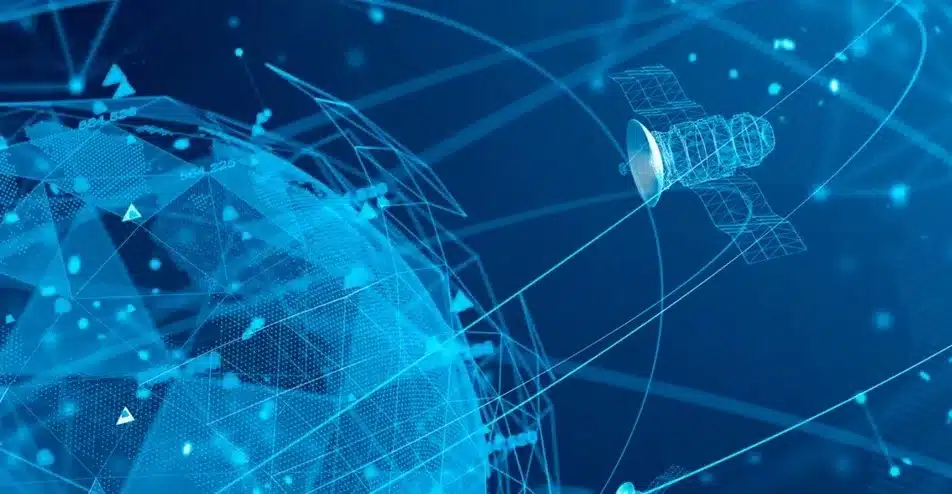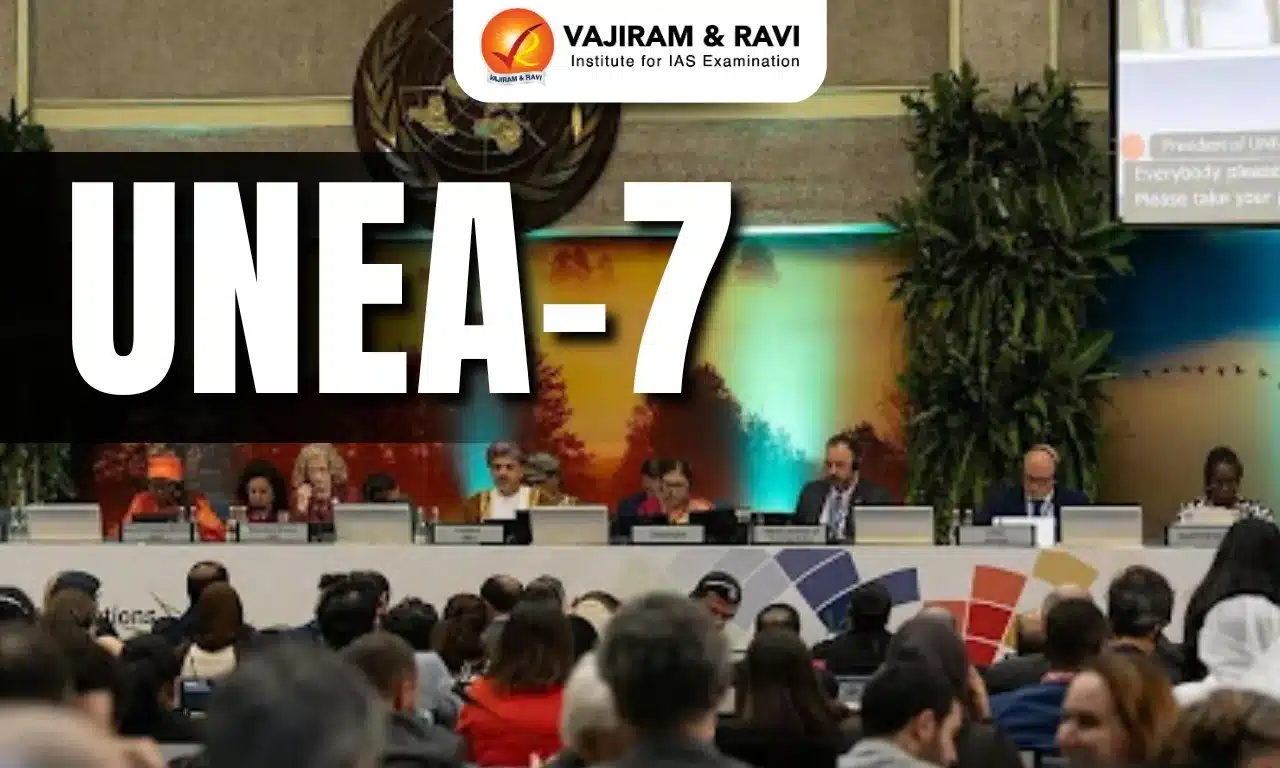What’s in today’s article?
- Why in News?
- National Quantum Mission
- Quantum satellite
- How Are Messages Secured?
- How Can Quantum Physics Protect Messages?
- Implementation of Quantum Key Distribution (QKD)
- Drawbacks of QKD
Why in News?
- Recently, the chairman of the Mission Governing Board of the National Quantum Mission, announced that India plans to launch a quantum satellite within the next 2-3 years to enable quantum communications.
- This initiative is part of the country’s efforts to advance in quantum technology.
National Quantum Mission (NQM)
- About
- NQM, launched by the Department of Science & Technology, aims to harness quantum physics for next-generation communication and sensing systems.
- While classical physics has driven technological advances like telecommunications, AI, and weather forecasting, it is approaching its performance limits.
- Quantum physics, offering capabilities beyond classical systems, promises revolutionary devices with enhanced abilities.
- Budget
- Approved by the Union Cabinet in April 2023 with a budget of Rs 6,000 crore, the NQM will run from 2023 to 2031.
- A key initiative under the mission is the development of a quantum satellite, scheduled for launch within 2-3 years, to pioneer quantum communications.
Quantum satellite
- A quantum satellite is a communications satellite leveraging quantum physics to secure signals against interception.
- Communication technologies rely heavily on security to prevent unauthorized access during message transmission across networks.
- The rise of quantum computers poses a threat to current encryption methods.
- However, quantum physics also enables advanced security measures, with quantum satellites playing a pivotal role in ensuring robust, next-generation protection.
How Are Messages Secured?
- Encryption as a Solution
- Modern communication tools like WhatsApp secure messages through encryption.
- Encryption converts messages into a secret code before transmission, which can only be decoded by the recipient using the correct key.
- If intercepted, the message remains unreadable without the key.
- Cryptographic Security
- This system relies on hiding the decryption key behind complex mathematical problems.
- While the sender’s and recipient’s devices already have the solution, an eavesdropper would require immense computing power and time to crack the code.
How Can Quantum Physics Protect Messages?
- Quantum Cryptography and QKD
- Quantum cryptography secures messages using principles of quantum physics, with Quantum Key Distribution (QKD) being its most well-known application.
- QKD ensures that if an eavesdropper like Kaushik intercepts the key during transmission, the breach is detected, and the sharing is aborted.
- Quantum Measurement for Security
- Quantum physics states that measuring a quantum system, like a photon, changes its state.
- If eavesdropper measures photons carrying the key (encoded in two states, 0 and 1), the state will change, alerting the compromise.
- Quantum Entanglement
- Quantum entanglement links two photons such that a change in one immediately affects the other.
- This property helps detect eavesdropping, ensuring unconditional security, regardless of Kaushik’s technological resources.
Implementation of Quantum Key Distribution (QKD)
- Development and Current Progress
- While QKD protocols and technologies are still a decade from standardization, progress has been significant:
- China operates the world’s largest QKD network with three satellites and four ground stations.
- Experiments since 1992 have extended the distance of reliable QKD transmissions to several hundred kilometres via fibre-optic cables or free space.
- While QKD protocols and technologies are still a decade from standardization, progress has been significant:
- Notable Experiments
- China (2013): Researchers implemented QKD between a ground station and a moving hot-air balloon 20 km above, supporting the feasibility of quantum satellites.
- India (2024): A study by the Raman Research Institute, Bengaluru, found the Indian Astronomical Observatory in Hanle, Ladakh, to be ideal for satellite-based QKD due to low signal loss (44 dB compared to 50 dB in China’s experiment).
- India’s Planned Quantum Satellite
- The planned satellite will transmit signals at a main wavelength of 810 nm, with uplink and downlink wavelengths at 532 nm and 1550 nm, respectively.
- The projected beam distance is 500 km.
Drawbacks of QKD
- Criticism by the U.S. National Security Agency (NSA)
- The NSA recommends post-quantum cryptography over QKD due to the following limitations:
- Lack of Authentication: QKD doesn’t authenticate the source of the transmission.
- Hardware Dependence: QKD networks rely on hardware that can’t be easily upgraded or patched.
- High Costs and Risks: Infrastructure costs and insider threats limit its feasibility for many use cases.
- Limited Real-World Security: The security achieved depends on hardware and engineering designs, not the theoretical unconditional security promised by quantum physics.
- Vulnerability to Attacks: Eavesdroppers can cause denial-of-service (DoS) attacks by halting transmissions.
- The NSA recommends post-quantum cryptography over QKD due to the following limitations:
- Restrictions Imposed by Quantum Physics
- No-Cloning Theorem: Quantum information can’t be amplified like classical information, restricting its transmission across large distances.
- Post-Quantum Cryptography as an Alternative
- Post-quantum cryptography uses advanced classical encryption techniques to resist attacks from both quantum and classical devices, making it a more practical solution in some cases.
Q.1. What is the purpose of India’s National Quantum Mission?
India’s National Quantum Mission aims to harness quantum physics for advanced communication and sensing technologies. With a budget of Rs. 6,000 crore, it focuses on developing quantum satellites and pioneering next-gen communication systems.
Q.2. How does Quantum Key Distribution (QKD) secure messages?
QKD ensures secure key sharing by leveraging quantum properties like measurement-induced state changes and quantum entanglement. If an eavesdropper tries to intercept the key, the breach is detected, and the sharing is aborted, offering unprecedented security.
Source: What is the quantum satellite for India’s National Quantum Mission? | Explained
Last updated on December, 2025
→ Check out the latest UPSC Syllabus 2026 here.
→ Join Vajiram & Ravi’s Interview Guidance Programme for expert help to crack your final UPSC stage.
→ UPSC Mains Result 2025 is now out.
→ UPSC Notification 2026 is scheduled to be released on January 14, 2026.
→ UPSC Calendar 2026 is released on 15th May, 2025.
→ The UPSC Vacancy 2025 were released 1129, out of which 979 were for UPSC CSE and remaining 150 are for UPSC IFoS.
→ UPSC Prelims 2026 will be conducted on 24th May, 2026 & UPSC Mains 2026 will be conducted on 21st August 2026.
→ The UPSC Selection Process is of 3 stages-Prelims, Mains and Interview.
→ UPSC Result 2024 is released with latest UPSC Marksheet 2024. Check Now!
→ UPSC Prelims Result 2025 is out now for the CSE held on 25 May 2025.
→ UPSC Toppers List 2024 is released now. Shakti Dubey is UPSC AIR 1 2024 Topper.
→ UPSC Prelims Question Paper 2025 and Unofficial Prelims Answer Key 2025 are available now.
→ UPSC Mains Question Paper 2025 is out for Essay, GS 1, 2, 3 & GS 4.
→ UPSC Mains Indian Language Question Paper 2025 is now out.
→ UPSC Mains Optional Question Paper 2025 is now out.
→ Also check Best IAS Coaching in Delhi

















